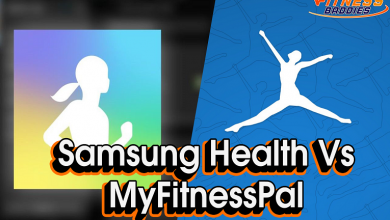Ditch the Bootcamp Mentality
by

This guy looks like he’s ready for some “plyometrics.”
Last weekend I volunteered to judge Vermont’s first local Crossfit competition hosted by Green Mountain Crossfit in Montpelier. It was a very fun and great experience and I had a great time helping out, encouraging and judging competitors and being around other “fitness” people. Given my lack of many social activities due to work and life (totally don’t mind), it was kind of like a “party” for me. Hahaha. I creeped photos of hot men, baked in the sun, and met some interesting people. I also enjoyed watching the competition and it felt good to be able to contribute to the event. I also got to do what I like to do best, and that is analyze movement, performance, body mechanics and the mental side of competing. This experience contributed to my thoughts on a couple topics that I will address here, including my opinion of Crossfit “style” workouts, high impact training and training for looks vs performance. It reminded me of something I had been musing on for some time.
I’ve been following Daniel Gallucci, a respected sports therapist, strength and conditioning coach, and writer in Toronto, for awhile now (He has a couple degrees, and has worked with the Toronto Maple Leafs, Ottawa Senators, Toronto Raptors, Toronto Marlies, Canadian Soccer Association, Rowing Canada, Boxing Canada, Triathlon Canada, Sledge Hockey Canada, Squash Canada, Canadian Cycling Association, Canadian Figure Skating, National Ballet of Canada, Royal Canadian Golf Association, MTK…. get the idea?) and he did a series on his blog titled “Bootcamp Errors”, that I read quite sometime ago. He described his concerns with many people doing high intensity exercise that they are not prepared for, and the havoc it can wreak on your joints and progress (even if you don’t get significantly injured). You can check out the articles here under the “Training” section:
Physicalprep
In that series he addressed a lot of concerns with the types of exercise he sees going on in “bootcamps” (he also did a series on his opinion of Crossfit, which I won’t get into here, but it correlates). As I continue with my education in the field of strength and conditioning, I often “connect” knowledge in my mind that I have previously heard or read about, that now makes more sense to me because I have much better context and application with which to “match” it in my own experiences now. What I am often fond of saying that I hear from just about every great trainer/coach I follow is:
The method may vary, but the principles remain the same.
This definately applies here. And as some people will easily point out, nothing I say here is “new”.
I am a firm believer in “finding out for yourself”, and when you are honest with your lack of experience, knowledge or area of doubt, the more you research and absorb and listen the more you will find that the RIGHT information adds up. And not only adds up, but that the same “type” of people will promote it, even if their style or application varies. SO, back to the topic of watching a Crossfit competition and Bootcamps.
My first station to man that day was competitors jumping down off a rock. My job was not to judge, but just to stand there for safety purposes in case someone slipped or something (they were carrying sandbags). It was an obstacle course, and I got to watch 64 people jump off a rock repeatedly (disclaimer here, I am not disrespecting the competitors or belittling their performance, I am merely going to use this as an example that ties into my point, which I WILL make. haha). This was an interesting example of landing mechanics. I am particularly interested in proper landing mechanics because of my own knee injuries and because of working with many athletes whose coaches insist on a high level of “plyometric” training without the athletes having any kind of strength base. This sets them up for many injuries, of which I see all the time. Personally, I am trying to stem the tide of ankle and knee sprains by convincing them that plyo/jump training and high impact training needs to be introduced gradually AFTER a strength base is built. This includes runners. Let’s just say that it not only looked painful but sounded painful. The great majority of competitors landed with an audible THUMP, unbalanced and with knee valgus. So basically their landing position looked like the guy on the right:
Now in a competition you are not thinking about form much right? Thats one of Crossfit’s biggest defences of the severely bad form you see in some competitions. But I am firm believer that severe breakdowns in form should not even come CLOSE to being regular and should only occur (if they do occur) at the higher and final levels of competition. For instance: Rich Froning has a less than optimal Snatch in the final WOD of the Crossfit Games. Or Bret Contreras’ back curving (in a way he planned and defended may happen occasionally during 1RM’s) when he finally reached his goal of deadlifting 6 45lb plates on each side of the barbell. You can watch that here and read the whole article if you are gonna question the form:
Bret Deadlifting
A couple of competitors did not “jump” directly off the rock with a huge thump, but chose the lowest side of it and hopped off quietly. Perhaps they had a good reason to know better. Continuing to watch the competition, you could easily tell which ones regularly practiced good form, and were prepared for the intensity it required. Even when pushing the last reps, their bodies did not break down excessively. They were also the ones who looked like they had a decent strength base to begin with, they just moved differently! They were efficient and smooth, vs hardcore but sloppy and jerky.
Bad form should not be exhibited as part of “everyday” workouts, or even for the majority of competition. The movement patterns of good form need to be ingrained from the onset of your training so that they come automatically to you when you are pushed harder in competition or when attempting a personal record. From watching so many people work out both recreationally and in preparation for a sport (at the highschool level), this is so often ignored in favor of “harder is better”. For some reason pushing your strength limits in basic movements never seems as exciting as bouncing around like a maniac and sweating doing 30 different exercises. Its another reason why I am getting more and more uncomfortable with “okaying” home programs like P90x or Insanity that require you to work at a very fast pace doing many impact movements that involve jumping. What we often call “plyometrics”. My usual disclaimer to people who ask my advice on those programs is to follow the movements, but not at the same speed. Replace the jump lunges for regular lunges, the explosive pushups for regular pushups, until you build enough basic strength that the higher intensity will benefit you properly (unfortunately from a weight loss perspective, basically anything can make you lose fat even if its not optimal for future progress).
The other day I was in a park watching a local trainer I know of (mid-aged female) lead a group of ladies through a “bootcamp” workout. It involved running up and down a parking lot, burpees (tho you could barely call them that), and what I assumed where bodyweight squats. It was painful to watch. More painful because I KNEW that those ladies were judging the effectiveness of their workout on how “hard” it was. Hard in the sense that it was downright painful, uncomfortable and I could tell just from watching them move that the continuous impact movements were hard on all their joints. Burpees are hard when you do them right, much more so when you are sinking in your shoulder joints and bouncing on your knees and thudding to the ground after a halfhearted jump. All of these ladies were heavier to top it off. I could SEE the bad effect this would have on their joints. Even if the bad effects won’t show up for awhile; YOU ARE ENCOURAGING THEIR EVENTUAL APPEARANCE. This same trainer was one that I saw having a very obese woman doing box jumps! We often hear the mantra of “everyone should work out the way they want” and “find what works for you” etc etc. YES! I believe that!!! BUT I am firmly in the camp of leaving the high impact exercising for when your body is ready for it. My friend Daniel goes as far to say that:
“For all you bootcampers out there, once you can pass a biomechanic assessment and squat at least 1.5 times your bodyweight, then you can start thinking about plyometrics. You will be starting with low level plyometrics such as bounding, hopping and striding exercises before you even think about doing the one legged burpees that I saw on Friday. The volume of this type of training should also start very conservatively in order to properly prepare you body for the increased demand that plyometrics place on your body.”
The more I watch people move, and see where their training takes them over time, I cannot emphasize enough how important it is to ditch the “bootcamper” mentality and focus on building a basic strength base with progressive overload, to THEN be ready to challenge yourself with a variety of styles of training if it suits your purposes! And most importantly if it involves anything that is highly repetitive and high impact. Running and all kinds of jumping like burpees, box jumps, broad jumps etc. This doesn’t mean to suddenly develop a fear of any kind of movement that isn’t slow and controlled. lol. Because I have seen that extreme too. It’s understanding that your joints and ligaments are what absorb the stress of that impact and to protect them, you need to have SOMETHING supporting them. That support is muscles. Muscles are best built in beginners with your basic strength movements. Applying speed and intensity before you can control it is a recipe for future disaster if not immediate disaster.
Slow to smooth to fast
Good movers are almost always in control of the movement (I say almost to make an allowance for breakdown in form during intense competition or a personal record). That’s why we can look at, say, an elite gymnast and wonder why he can make it seem so easy. He has incredible control. How does this relate to your average exerciser who is saying “well what do I do for exercise now?” Set up a strength routine. Either from home or at your gym. There are plenty of other posts on the topic, so I won’t get into it. I can’t count how many people who I see that are willing to go in day after day after day and judge progress by how hard they “perceived” themselves to work, rather than if they are getting any better. As a trainer, it’s easy to succumb to the desire to make people “feel” that in the moment as well! I’ve caught myself thinking that “they need a conditioning finisher to top it off”, rather than trusting to the programming I’ve already thought and planned out and that is going well. A lot of people (and I was just discussing this with a friend today) do not like being forced to think for themselves, to learn their body etc, and strength training requires you to do that. To learn the movements, to work harder next time, to gauge progress. Unless you can commit to that process, chances are you will not ever really “get it”. Bootcamps will always be hard and tiring and leave you too sore. You will always have that last 10 lbs that don’t go away. You will always have joint pain that seems just “normal”. You will always consider exercise to be a chore rather than a privilege.
There are plenty of things that you can do that are very hard, break a sweat, make you feel like you are pushing AND at the same time set you up for future success, rather than just spinning your wheels and possibly injuring yourself. Watching some of these people sweat through their bootcamp or Crossfit classes doing endlessly repetitive movements where the form is getting worse and worse and the fatigue is setting in for too long a time (which with true high intensity, should happen fairly quickly), its painful to watch! You can be perfectly well prepared for doing anything you heart pleases with a low chance of injury or excessive stress, if you plan for it and prepare your body to do it correctly.
I am eating a lot of my words coming from a “Crossfit cultie” background. At the time, I didn’t have enough knowledge to place what I learned about Crossfit in good context. Same with P90x and Bodyrock.tv and Insanity and Taebo and what have you. I might get some flak for this statement, but I would go so far as to say that most people should just ditch all those programs, and invest in a gym membership or a set of dumbbells and a pull-up bar.
Daniel finished off one Bootcamp post with,
“We are working on a petition to stop the madness. Its going to be called STOP F@*CKING JUMPING AND GO DO SQUATS!”
There you go.



